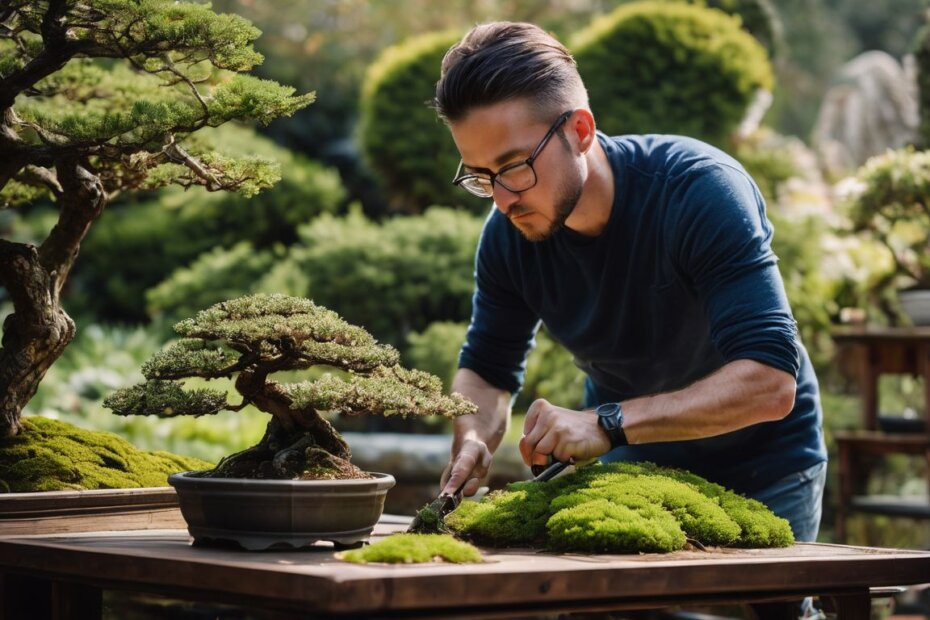
You’ve just started growing a bonsai and realized it’s getting a tad unruly. Pruning is an art that turns these miniature trees into living sculptures. This guide will walk you through the steps to trim your bonsai, ensuring it thrives in style and health.
Keep reading; your bonsai awaits its transformation.
Key Takeaways
- To prune a bonsai tree, you need the right tools like sharp scissors, cutters, shears, and wire cutters for shaping branches.
- Regular pruning helps maintain your bonsai’s size and shape, encourages healthy growth by improving sunlight and air exposure to inner branches, and prevents diseases by removing dead or overgrown limbs.
- The best time to prune your bonsai is during its dormant period in late winter or early spring when it’s not actively growing to allow for better recovery.
- When shaping a bonsai tree with wire after pruning, gently bend branches into place without forcing them; adjust as needed while the tree grows.
- Fix mistakes immediately during pruning by carefully removing misplaced or damaged branches; unwinding or adjusting wire without harming the plant is essential for correcting errors in shaping.
Why Pruning is Important for Bonsai Trees

Pruning is important for bonsai trees because it promotes healthy growth, helps maintain the desired shape and size of the tree, and improves overall tree health. It also encourages new leaf and flower development.
Promotes growth

Pruning your bonsai tree does much more than keep it looking good; it’s crucial for the tree’s growth and vitality. Cutting back the outer branches allows sunlight and air to reach deeper into the foliage, encouraging strong, healthy development throughout.
As you trim back old or overgrown parts of your bonsai, you stimulate new growth in other areas, making the tree fuller and more robust. It’s a way of directing your tree to put energy into expanding younger shoots and leaves which can result in a more balanced and vibrant appearance.
Regularly snipping away at dead or unnecessary branches not only shapes your tiny tree but also prevents resources from being wasted on parts that don’t contribute to its overall health.
This careful removal redirects nutrients to flourishing sections, giving them an extra boost. With each cut made during bonsai pruning techniques, think of it as nurturing potential for future growth – ensuring that every branch has its place in the miniature landscape you’re cultivating with patience and precision.
Maintains shape and size
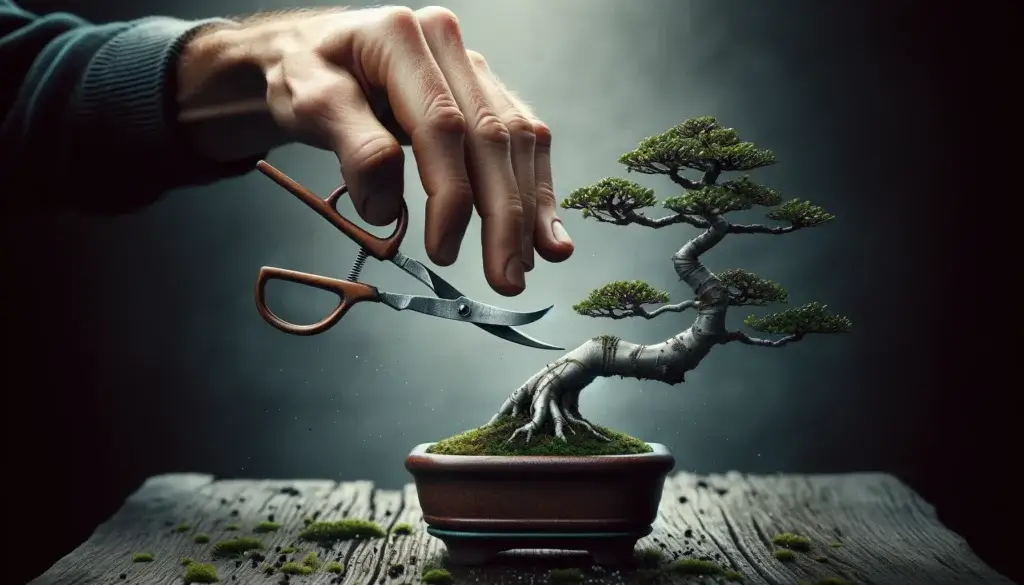
Regular pruning helps your bonsai tree maintain its desired shape and size. By carefully trimming back new growth, you encourage the tree to develop a dense canopy and compact appearance.
This will help your bonsai maintain its defined form and remain an aesthetically pleasing addition to any space. Additionally, maintaining the shape and size of your bonsai through regular pruning allows for better control over its overall appearance, ensuring it continues to embody the characteristics that make it unique.
Continually shaping your bonsai through consistent pruning not only keeps it looking beautiful but also promotes overall health by allowing sunlight to penetrate all areas of the tree, facilitating improved airflow, and reducing potential disease or insect infestations.
Improves tree health

Regular pruning of bonsai trees improves overall tree health. By removing dead, diseased, or overgrown branches, you can enhance air circulation and sunlight penetration throughout the tree, promoting healthy growth.
This process also helps prevent pest infestations and diseases by maintaining a balanced structure that allows for proper nutrient distribution to all parts of the tree. Proper pruning encourages new bud development, resulting in a vibrant and robust bonsai tree.
Pruning also stimulates the tree’s natural defense mechanisms and strengthens its immune system. Trimming away excess growth redirects the plant’s energy towards essential areas, encouraging strong root and foliage development which supports long-term vitality.
Necessary Tools for Pruning Bonsai Trees
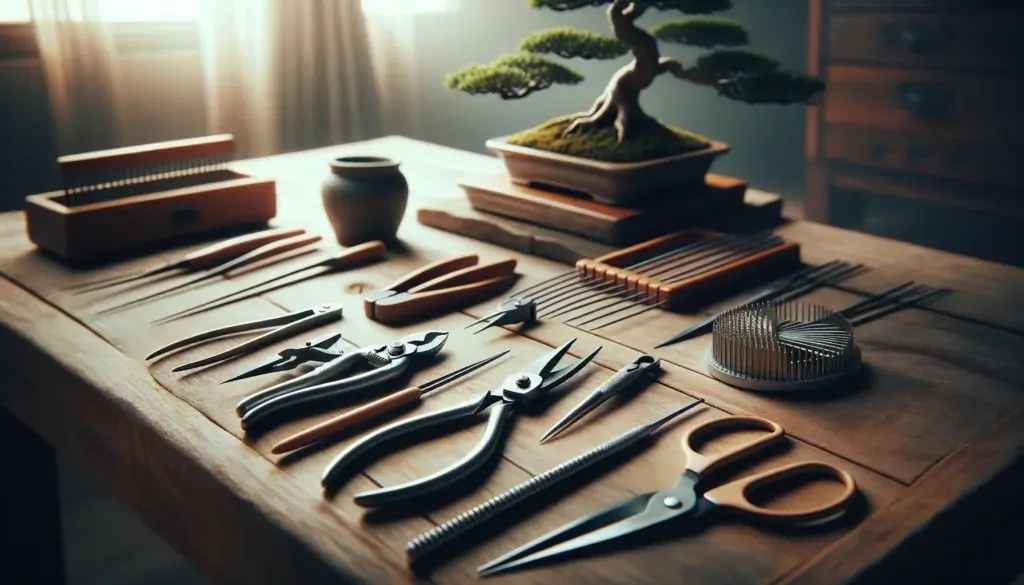
To properly prune your bonsai tree, you will need the right tools like scissors, cutters, or shears, as well as wire cutters for shaping. These tools are essential for maintaining the health and shape of your bonsai tree.
Scissors, cutters, or shears

Choose the right tool for the job. Scissors, cutters, or shears are essential for precise cuts when shaping and maintaining your bonsai tree. Using the appropriate cutting tool ensures clean and efficient pruning, promoting healthy growth and maintaining the desired shape of your bonsai tree.
Wire cutters
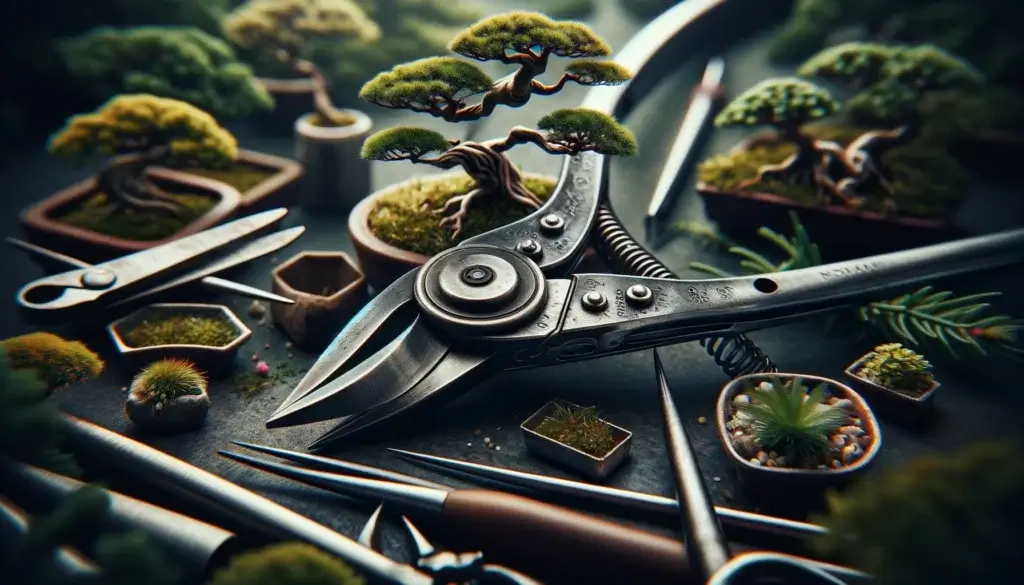
After using scissors, cutters, or shears for trimming your bonsai tree, wire cutters are essential for shaping it. When it comes to wiring a bonsai tree, you’ll need to use aluminum or copper wire to gently bend and shape the branches.
Once the wire is in place and the branches have been carefully shaped and positioned, you will require wire cutters to remove the excess wire. These specialized tools ensure that you can precisely snip off any extra length of wire without damaging the tree.
When pruning and shaping your bonsai tree with wires, having a good pair of wire cutters at hand is crucial for achieving the desired look without causing harm to your delicate plant.
Step-by-Step Guide to Pruning Bonsai Trees

Selecting a shape that you want for your bonsai tree is the first step. Then, carefully decide what to cut and make the necessary cuts with the appropriate tools. Use wire to shape the branches and trunk as needed, and be prepared to fix any mistakes along the way.
Selecting a shape
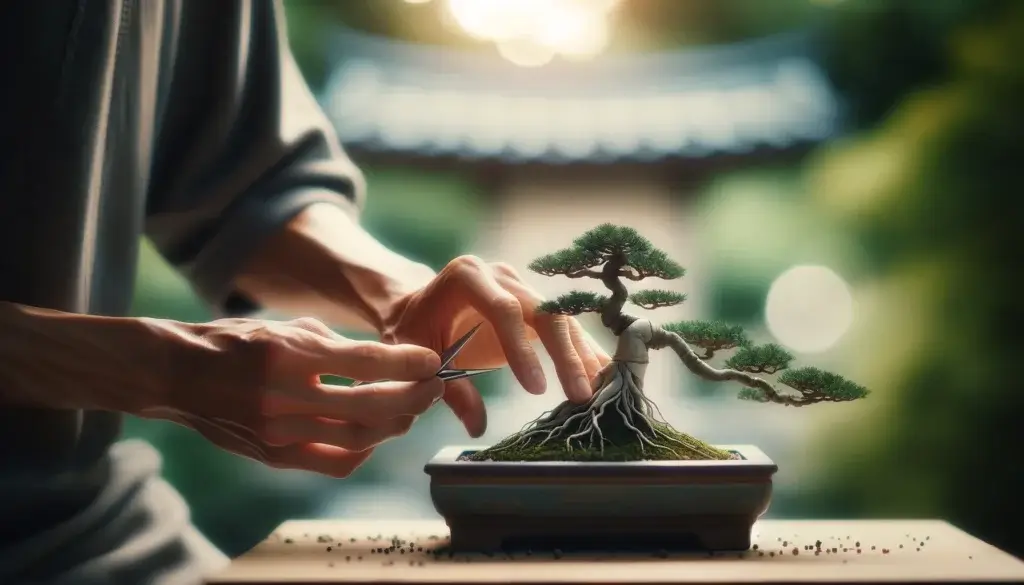
When shaping your bonsai tree, consider the style that you envision for it. Different styles like informal upright, formal upright, slanting, or cascade require different pruning techniques.
Assess the existing structure of the tree and determine which style will best complement its natural growth pattern. Take into account the trunk’s movement and taper as well as the placement of branches to decide on a suitable shape that showcases the tree’s unique characteristics.
Once you have selected a style for your bonsai tree, study various examples of that particular shape to understand how best to achieve it with your specific tree. This will help you visualize where cuts need to be made and how the overall form should look after pruning.
Deciding what to cut
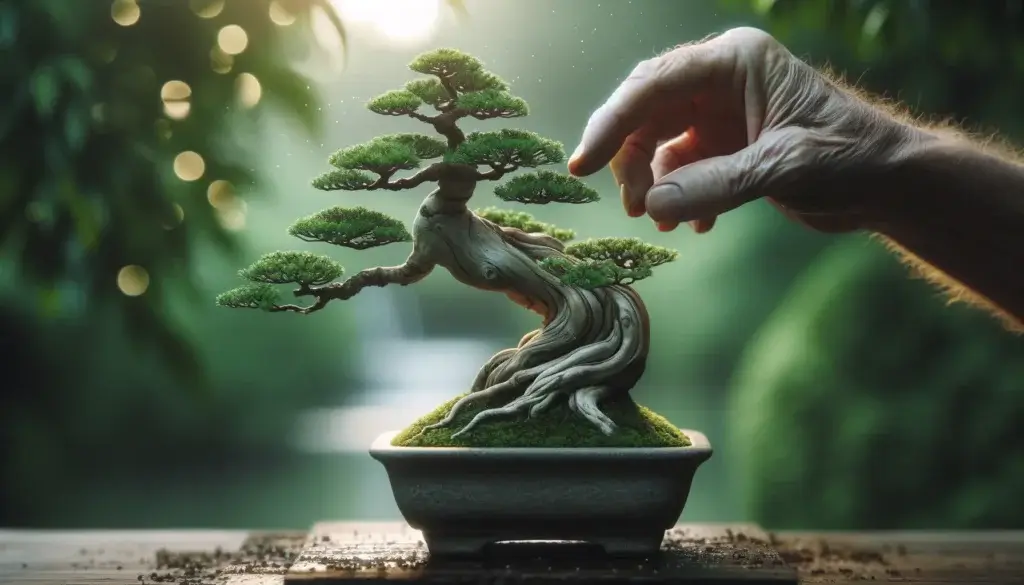
After selecting a shape for your bonsai tree, the next step is deciding what to cut. Take a close look at the overall design and carefully identify any unwanted growth or branches that do not contribute to the desired shape.
Specifically, focus on removing branches that grow inwards towards the trunk or ones that disrupt the overall balance of the tree. Use your pruning shears to trim these areas, ensuring precise and clean cuts to promote optimal healing and future growth.
Once you have identified which branches need trimming, proceed with confidence and only remove those necessary for achieving your desired bonsai form. Always consider how each cut will impact the overall aesthetics of the tree as well as its health and structure.
Making the cut

Select the branch you want to prune. Position your cutting tool at a 45-degree angle and make a clean, swift cut. Ensure that the cut is close to the trunk or main stem without damaging it.
Take care not to leave behind any jagged edges that could invite disease or pests into the tree.
After selecting which branches to trim, proceed with decisively snipping them off using sharp scissors or shears, ensuring a smooth and even finish. Trim any excess foliage while maintaining the desired shape of your bonsai tree for healthy growth.
Using wire to shape
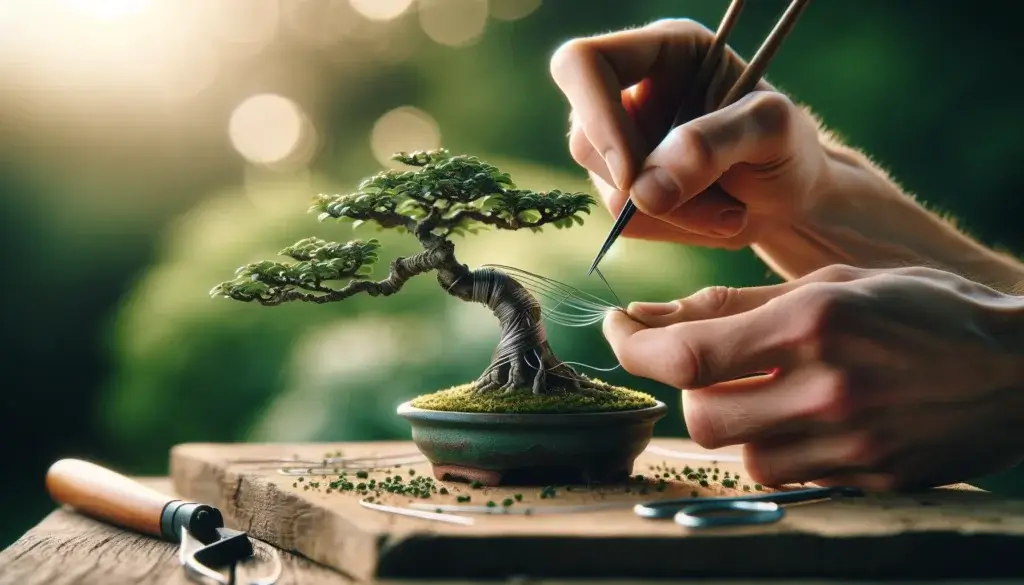
Carefully wrap wire around the branches of your bonsai tree to guide their growth and create a desired shape. Gently bend and position the wired branches, ensuring they maintain the intended form over time.
Once you’ve made the cuts according to your plan, wire can serve as an effective tool for shaping your bonsai tree. Now let’s move on to fixing mistakes in our step-by-step guide to pruning bonsai trees.
Fixing mistakes
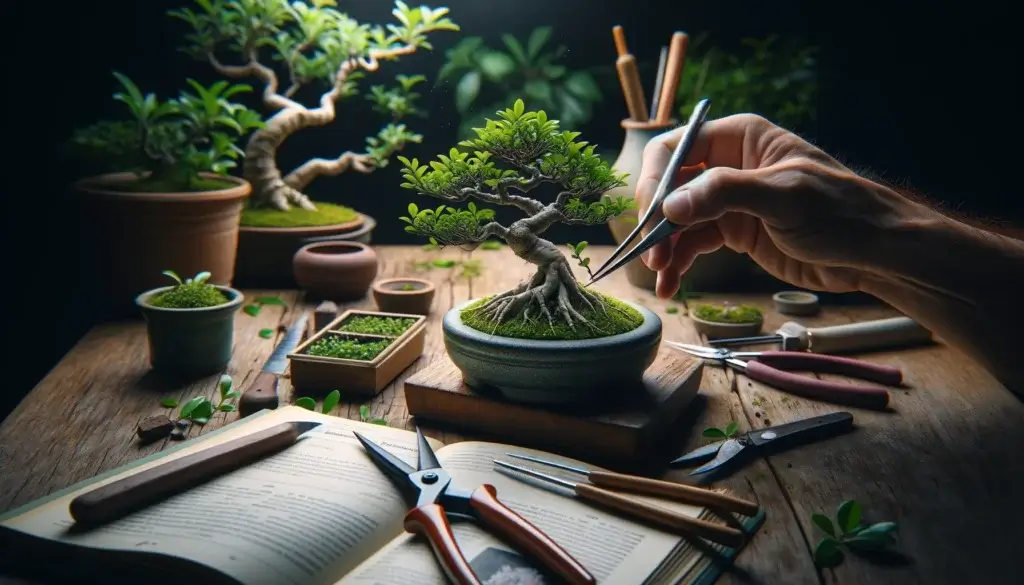
If you notice a mistake while pruning your bonsai tree, don’t panic. Carefully inspect the area and determine the best course of action. Gently remove any damaged or misplaced branches with sharp pruning shears to maintain the overall shape and health of your bonsai tree.
After making the necessary adjustments, step back and evaluate the appearance to ensure that it aligns with your desired outcome.
Should an error occur during wiring, carefully unwind or adjust the wire as needed without causing further damage to the branches. Aim for gradual shaping rather than forcing drastic changes, allowing time for the tree to adapt naturally.
Frequently Asked Questions about Bonsai Tree Pruning
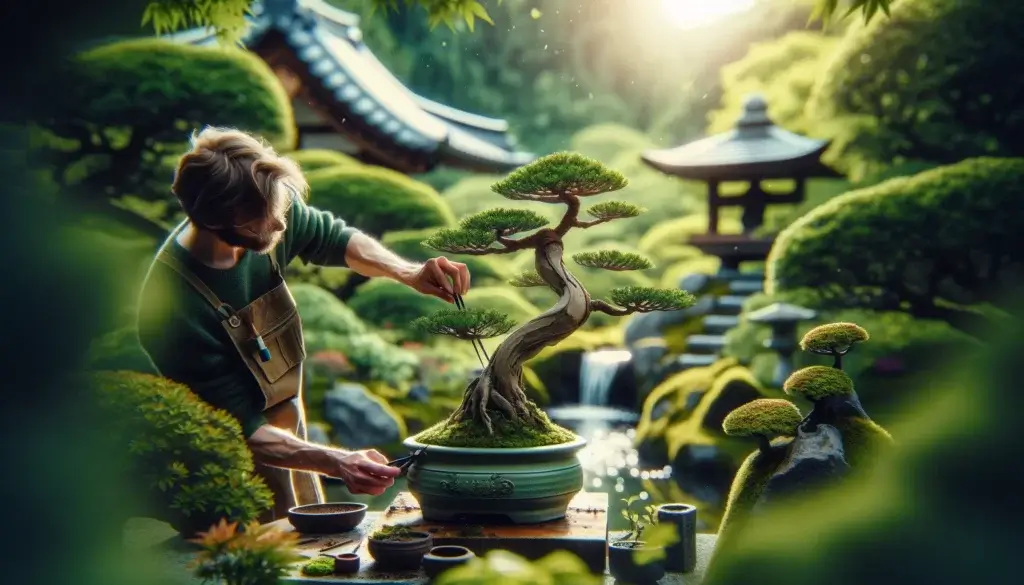
When should you prune your bonsai tree? What tools do you need for pruning? Why is pruning necessary for bonsai trees? How do you shape a bonsai tree? These are some common questions about bonsai tree pruning that will be answered in this section.
When to prune

Prune your bonsai tree during the dormant season in late winter or early spring. This is when the tree is not actively growing, allowing it to recover from pruning stress more quickly.
Avoid pruning during the fall as this can weaken the tree before winter and make it more susceptible to cold damage.
To determine the exact timing for pruning, observe your bonsai’s growth patterns and consider its specific species. Some varieties may require more frequent pruning than others.
What equipment is needed

Sharp scissors, concave cutters, or shears are essential for precise pruning of bonsai trees. Wire cutters are also necessary to shape and train the branches using wire. With the right tools at hand, you can effectively maintain the size and shape of your bonsai tree while promoting healthy growth.
Now let’s delve into the step-by-step process of pruning and shaping your bonsai tree with these tools.
Why pruning is necessary
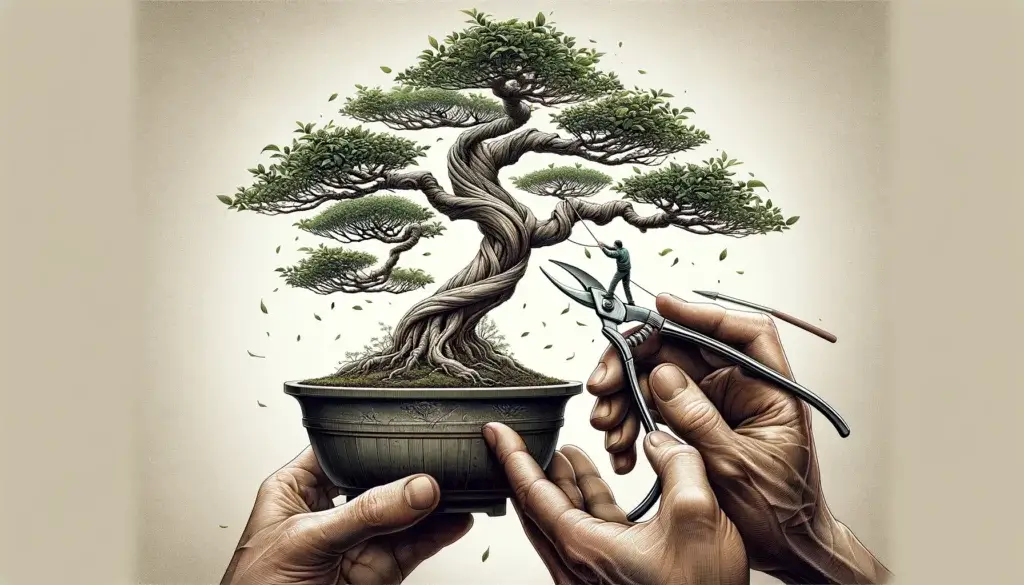
After understanding the essential tools for pruning bonsai trees, it’s important to recognize why pruning is necessary. Pruning plays a crucial role in maintaining the health and aesthetics of your bonsai tree.
By removing dead or overgrown branches, you stimulate new growth and maintain the desired shape and size of your tree. Additionally, regular pruning enables better air circulation and sunlight exposure, which are vital for the overall health of your bonsai.
Furthermore, effective pruning techniques can prevent diseases and pests from affecting your tree, ensuring its long-term vitality.
How to shape a bonsai tree

To shape a bonsai tree, start by visualizing the desired design. Carefully prune excess branches and foliage using sharp scissors or cutters to achieve the intended shape. Gently bend and position branches using wire to further refine the tree’s form.
Regularly inspect and adjust the wiring as needed to encourage growth in the desired direction.
After shaping your bonsai, maintain its appearance by regularly pruning new growth and adjusting wires as necessary. This will help preserve the tree’s shape and size while promoting overall health and aesthetics for years to come.
Conclusion
In conclusion, with the steps provided for pruning bonsai trees, you can achieve a well-maintained and healthy tree. Implementing these techniques will ensure practical and efficient care for your bonsai.
Have you considered trying out these methods to shape and trim your own bonsai trees? Embracing pruning as a regular practice can lead to significant improvements in the health and aesthetics of your bonsai.
Explore further resources on advanced pruning techniques or seek guidance from experienced enthusiasts. The art of pruning is not just about maintenance; it’s about nurturing life in its most exquisite form – shaping miniature trees that stand as captivating works of natural art.
FAQs
1. What are the basic steps for pruning bonsai trees?
Pruning bonsai trees involves trimming and shaping to maintain their miniature size and enhance their appearance using specific bonsai tree pruning techniques.
2. Why is trimming important for bonsai tree care?
Trimming a bonsai tree helps control growth, encourages health, and ensures the shape of the tree stays true to traditional bonsai aesthetics as part of its regular maintenance.
3. Can I learn how to shape my own bonsai with a tutorial?
Yes, you can follow a bonsai tree pruning tutorial that’ll guide you through various shaping techniques, helping you apply them correctly for your specific type of bonsai.
4. What tools do I need for proper bonsai tree trimming?
For effective trimming and shaping of your bonsai trees, use sharp and precise Bonsia Tree Pruning shears along with other specialty grooming tools designed for this delicate work.
5. Are there special techniques in Bonsais Tree styling tips I should know about?
Absolutely! There are many specialized pruning methods such as pinching or defoliation detailed in Bonsa’s Tree Shaping Tips which help achieve different styles or effects on your plants’ look.
6. How often should I engage in Bonsia’s Tree Maintenance Trimming?
Regularly scheduled maintenance trimming will keep your plant healthy; however frequency may vary depending on the type of Bonsais it may differ between species so pay close attention to growth patterns.
